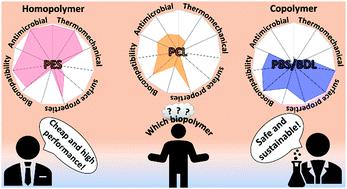当前位置:
X-MOL 学术
›
J. Mater. Chem. B
›
论文详情
Our official English website, www.x-mol.net, welcomes your feedback! (Note: you will need to create a separate account there.)
Human metabolite-derived alkylsuccinate/dilinoleate copolymers: from synthesis to application
Journal of Materials Chemistry B ( IF 7 ) Pub Date : 2020-09-23 , DOI: 10.1039/d0tb02068k Alessandro Jäger 1, 2, 3, 4 , Ricardo K. Donato 1, 2, 3, 4 , Magdalena Perchacz 1, 2, 3, 4, 5 , Katarzyna Z. Donato 1, 2, 3, 4 , Zdeněk Starý 1, 2, 3, 4 , Rafał Konefał 1, 2, 3, 4 , Magdalena Serkis-Rodzeń 1, 2, 3, 4 , Maria G. Raucci 6, 7, 8, 9, 10 , Alexandre M. Fuentefria 11, 12, 13, 14, 15 , Eliézer Jäger 1, 2, 3, 4
Journal of Materials Chemistry B ( IF 7 ) Pub Date : 2020-09-23 , DOI: 10.1039/d0tb02068k Alessandro Jäger 1, 2, 3, 4 , Ricardo K. Donato 1, 2, 3, 4 , Magdalena Perchacz 1, 2, 3, 4, 5 , Katarzyna Z. Donato 1, 2, 3, 4 , Zdeněk Starý 1, 2, 3, 4 , Rafał Konefał 1, 2, 3, 4 , Magdalena Serkis-Rodzeń 1, 2, 3, 4 , Maria G. Raucci 6, 7, 8, 9, 10 , Alexandre M. Fuentefria 11, 12, 13, 14, 15 , Eliézer Jäger 1, 2, 3, 4
Affiliation

|
The advances in polymer chemistry have allowed the preparation of biomedical polymers using human metabolites as monomers that can hold unique properties beyond the required biodegradability and biocompatibility. Herein, we demonstrate the use of endogenous human metabolites (succinic and dilinoleic acids) as monomeric building blocks to develop a new series of renewable resource-based biodegradable and biocompatible copolyesters. The novel copolyesters were characterized in detail employing several standard techniques, namely 1H NMR, 13C NMR, and FTIR spectroscopy and SEC, followed by an in-depth thermomechanical and surface characterization of their resulting thin films (DSC, TGA, DMTA, tensile tests, AFM, and contact angle measurements). Also, their anti-fungal biofilm properties were assessed via an anti-fungal biofilm assay and the biological properties were evaluated in vitro using relevant human-derived cells (human mesenchymal stem cells and normal human dermal fibroblasts). These novel highly biocompatible polymers are simple and cheap to prepare, and their synthesis can be easily scaled-up. They presented good mechanical, thermal and anti-fungal biofilm properties while also promoting cell attachment and proliferation, outperforming well-known polymers used for biomedical applications (e.g. PVC, PLGA, and PCL). Moreover, they induced morphological changes in the cells, which were dependent on the structural characteristics of the polymers. In addition, the obtained physicochemical and biological properties can be design-tuned by the synthesis of homo- and -copolymers through the selection of the diol moiety (ES, PS, or BS) and by the addition of a co-monomer, DLA. Consequently, the copolyesters presented herein have high application potential as renewable and cost-effective biopolymers for various biomedical applications.
中文翻译:

人类代谢物衍生的琥珀酸烷基酯/二亚油酸酯共聚物:从合成到应用
聚合物化学的进步使得人们可以使用人类代谢产物作为单体来制备生物医学聚合物,这种代谢产物具有独特的特性,而这些特性超出了所需的生物降解性和生物相容性。在本文中,我们证明了使用内源性人类代谢产物(琥珀酸和二亚油酸)作为单体结构单元来开发一系列新的可再生资源基可生物降解和生物相容性共聚酯。新型共聚酯采用几种标准技术进行了详细表征,即1 H NMR,131 H NMR,FTIR光谱和SEC,然后对所得薄膜进行深入的热机械和表面表征(DSC,TGA,DMTA,拉伸试验,AFM和接触角测量)。此外,通过抗真菌生物膜测定法评估了它们的抗真菌生物膜性质,并使用相关的人源细胞(人间充质干细胞和正常人皮肤成纤维细胞)在体外评估了其生物学性质。这些新型的具有高度生物相容性的聚合物制备简单,价格便宜,并且可以轻松扩大其合成规模。他们表现出良好的机械,热学和抗真菌生物膜特性,同时还促进细胞附着和增殖,胜过用于生物医学应用的知名聚合物(例如PVC,PLGA和PCL)。此外,它们诱导细胞的形态变化,这取决于聚合物的结构特征。此外,可以通过选择二醇部分(ES,PS或BS)并添加共聚单体DLA来合成均聚物和共聚物,从而对所获得的理化和生物学特性进行设计调整。因此,本文提出的共聚酯作为用于各种生物医学应用的可再生且成本有效的生物聚合物具有高应用潜力。
更新日期:2020-11-03
中文翻译:

人类代谢物衍生的琥珀酸烷基酯/二亚油酸酯共聚物:从合成到应用
聚合物化学的进步使得人们可以使用人类代谢产物作为单体来制备生物医学聚合物,这种代谢产物具有独特的特性,而这些特性超出了所需的生物降解性和生物相容性。在本文中,我们证明了使用内源性人类代谢产物(琥珀酸和二亚油酸)作为单体结构单元来开发一系列新的可再生资源基可生物降解和生物相容性共聚酯。新型共聚酯采用几种标准技术进行了详细表征,即1 H NMR,131 H NMR,FTIR光谱和SEC,然后对所得薄膜进行深入的热机械和表面表征(DSC,TGA,DMTA,拉伸试验,AFM和接触角测量)。此外,通过抗真菌生物膜测定法评估了它们的抗真菌生物膜性质,并使用相关的人源细胞(人间充质干细胞和正常人皮肤成纤维细胞)在体外评估了其生物学性质。这些新型的具有高度生物相容性的聚合物制备简单,价格便宜,并且可以轻松扩大其合成规模。他们表现出良好的机械,热学和抗真菌生物膜特性,同时还促进细胞附着和增殖,胜过用于生物医学应用的知名聚合物(例如PVC,PLGA和PCL)。此外,它们诱导细胞的形态变化,这取决于聚合物的结构特征。此外,可以通过选择二醇部分(ES,PS或BS)并添加共聚单体DLA来合成均聚物和共聚物,从而对所获得的理化和生物学特性进行设计调整。因此,本文提出的共聚酯作为用于各种生物医学应用的可再生且成本有效的生物聚合物具有高应用潜力。



























 京公网安备 11010802027423号
京公网安备 11010802027423号